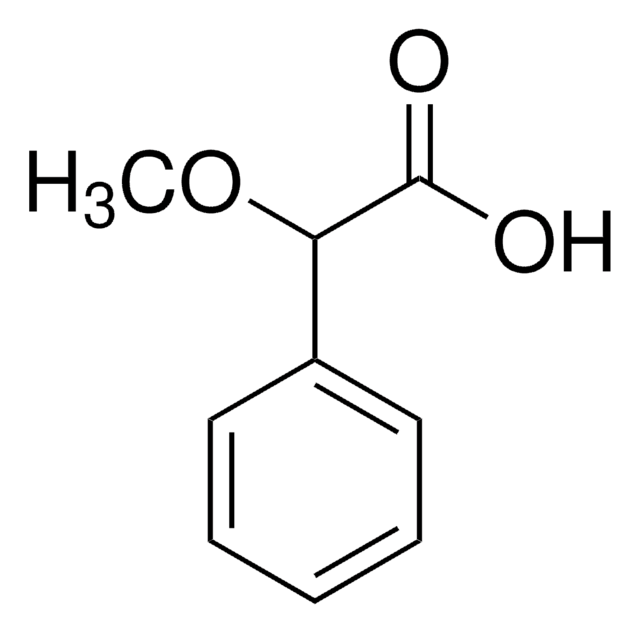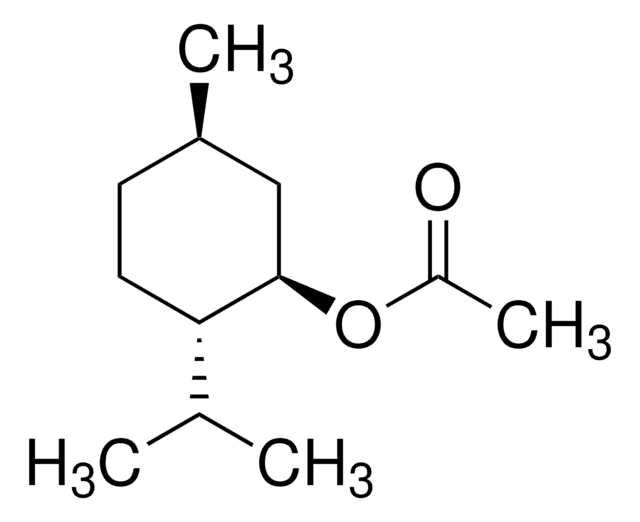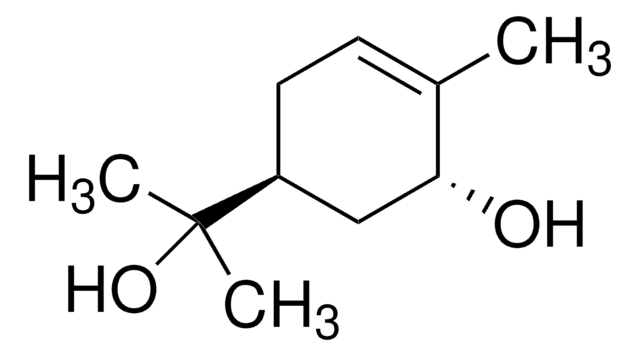16254
Thymol
meets analytical specification of Ph. Eur., BP, NF, 99-101%
Synonyme(s) :
5-méthyl-2-(1-méthyléthyl)phénol, 5-méthyl-2-isopropylphénol
About This Item
Produits recommandés
Pression de vapeur
1 mmHg ( 64 °C)
Niveau de qualité
Essai
99-101%
Forme
solid
Qualité
meets analytical specification of Ph. Eur., BP, NF
Impuretés
acidic reac. impurities, complies
organic volatile impurities, complies (GC)
related subst., complies (GC)
residual solvents, complies
≤0.05% non-volatile matter
pb
232 °C (lit.)
Pf
48-51 °C (lit.)
48-51 °C
Densité
0.965 g/mL at 25 °C (lit.)
Adéquation
complies for appearance of solution
Chaîne SMILES
CC(C)c1ccc(C)cc1O
InChI
1S/C10H14O/c1-7(2)9-5-4-8(3)6-10(9)11/h4-7,11H,1-3H3
Clé InChI
MGSRCZKZVOBKFT-UHFFFAOYSA-N
Vous recherchez des produits similaires ? Visite Guide de comparaison des produits
Catégories apparentées
Application
- the effect of thymol on the viability of Bacillus cereus.
- its effect on growth and production of citrinin from Penicillium citrinum.
- the effect of thymol on insect and human γ-aminobutyric acid (GABA) receptors.
Actions biochimiques/physiologiques
Clause de non-responsabilité
Mention d'avertissement
Danger
Mentions de danger
Conseils de prudence
Classification des risques
Acute Tox. 4 Oral - Aquatic Chronic 2 - Eye Dam. 1 - Skin Corr. 1B
Code de la classe de stockage
8A - Combustible, corrosive hazardous materials
Classe de danger pour l'eau (WGK)
WGK 2
Point d'éclair (°F)
240.8 °F - closed cup
Point d'éclair (°C)
116 °C - closed cup
Équipement de protection individuelle
dust mask type N95 (US), Eyeshields, Faceshields, Gloves, type P3 (EN 143) respirator cartridges
Faites votre choix parmi les versions les plus récentes :
Déjà en possession de ce produit ?
Retrouvez la documentation relative aux produits que vous avez récemment achetés dans la Bibliothèque de documents.
Les clients ont également consulté
Bacillus cereus Heat-Treated Vegetative Cells
Notre équipe de scientifiques dispose d'une expérience dans tous les secteurs de la recherche, notamment en sciences de la vie, science des matériaux, synthèse chimique, chromatographie, analyse et dans de nombreux autres domaines..
Contacter notre Service technique









